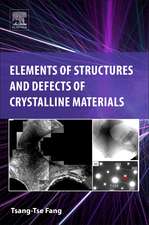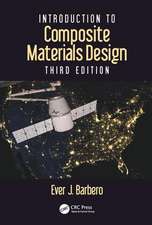Laser–Based Additive Manufacturing – Modeling, Simulation and Experiments
Autor NB Dahotreen Limba Engleză Hardback – 30 aug 2022
Preț: 693.54 lei
Preț vechi: 900.69 lei
-23% Nou
132.72€ • 137.72$ • 110.93£
Carte disponibilă
Livrare economică 18-24 februarie
Livrare express 11-15 februarie pentru 52.51 lei
Specificații
ISBN-10: 3527347917
Pagini: 304
Dimensiuni: 176 x 254 x 21 mm
Greutate: 0.73 kg
Editura: Wiley Vch
Locul publicării:Weinheim, Germany
Descriere
Explore laser-based additive manufacturing processes via multi-scale modeling and computer simulation
In Laser-Based Additive Manufacturing: Modeling, Simulation and Experiments, a distinguished team of researchers delivers an incisive framework for understanding materials processing using laser-based additive manufacturing (LAM). The book describes the use of computational modeling and simulation to explore and describe the LAM technique, to improve the compositional, phase, and microstructural evolution of the material, and to enhance the mechanical, chemical, and functional properties of the manufactured components.
The accomplished authors combine a comprehensive overview of multi-scale modeling and simulation with experimental and practical observations, offering a systematic review of laser-material interactions in advanced LAM processes. They also describe the real-world applications of LAM, including component processing and surface functionalization.
In addition to explorations of residual stresses, three-dimensional defects, and surface physical texture in LAM, readers will also find:
- A thorough introduction to additive manufacturing (AM), including the advantages of AM over conventional manufacturing and the challenges involved with using the technology
- A comprehensive exploration of computation materials science, including length- and time-scales in materials modeling and the current state of computational modeling in LAM
- Practical discussions of laser-material interaction in LAM, including the conversion of light energy to heat, modes of heat dissipation, and the dynamics of the melt-pool
- In-depth examinations of the microstructural and mechanical aspects of LAM integrated with modeling
Perfect for materials scientists, mechanical engineers, and physicists, Laser-Based Additive Manufacturing: Modeling, Simulation and Experiments is perfect for anyone seeking an insightful treatment of this cutting-edge technology in the areas of alloys, ceramics, and composites.







